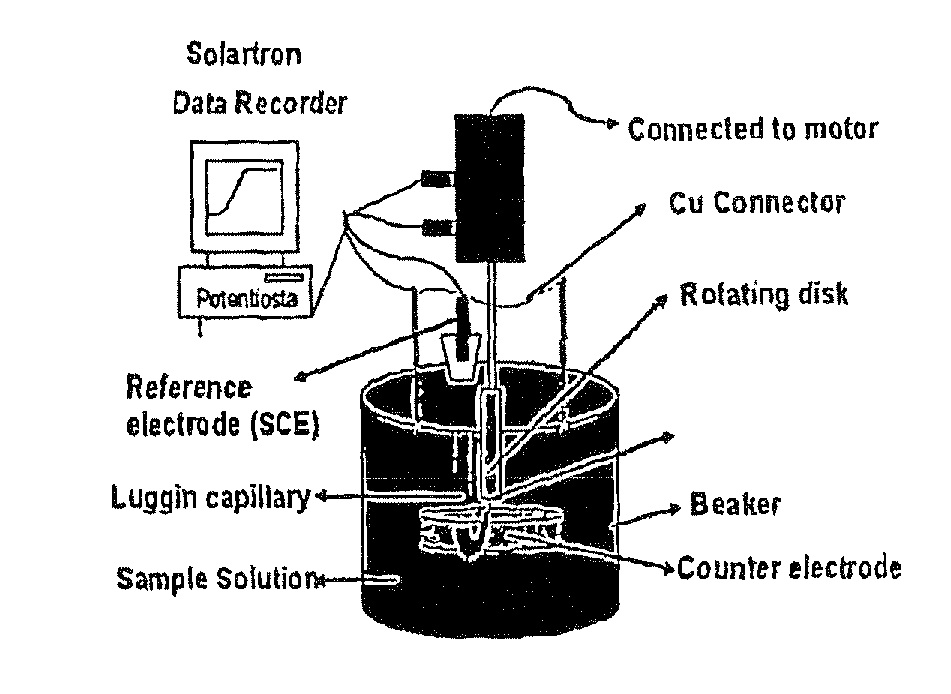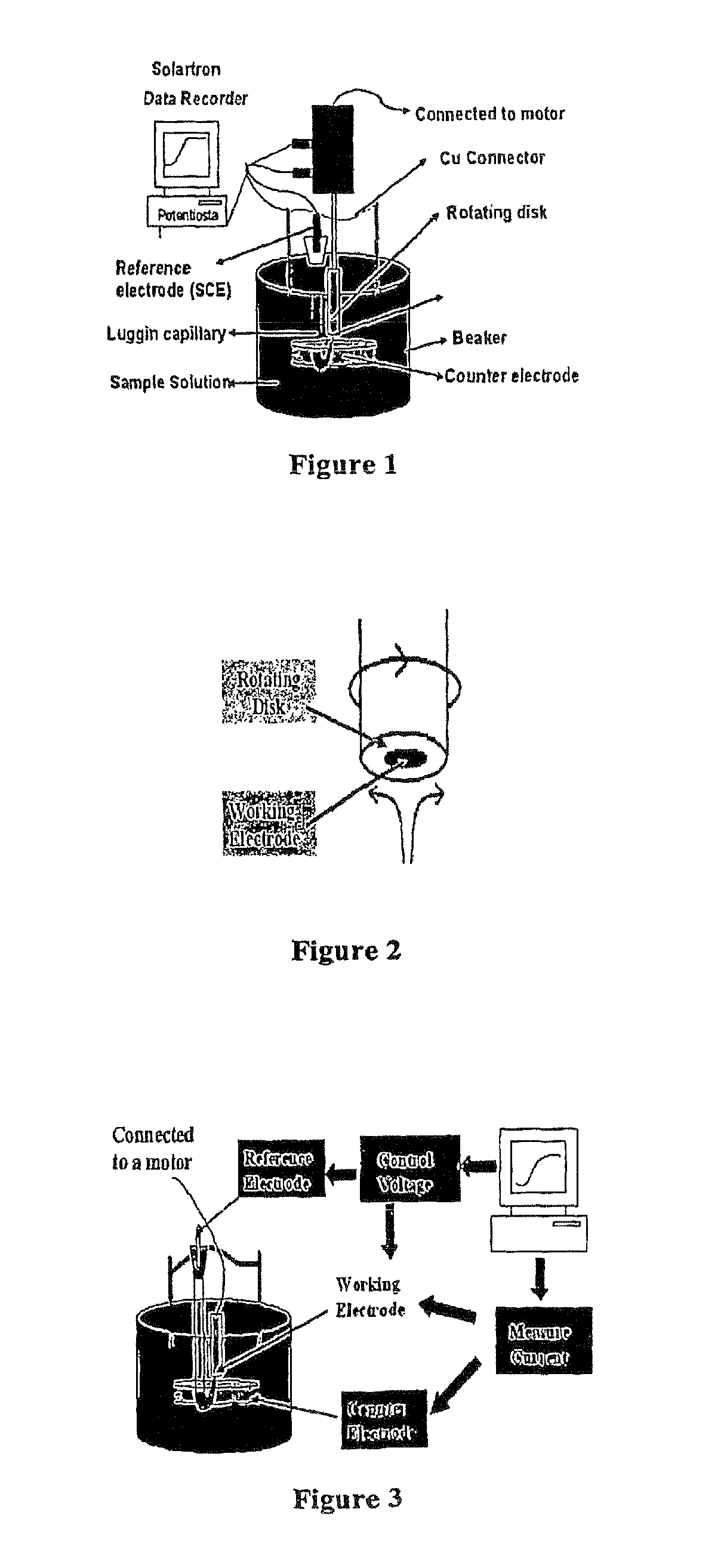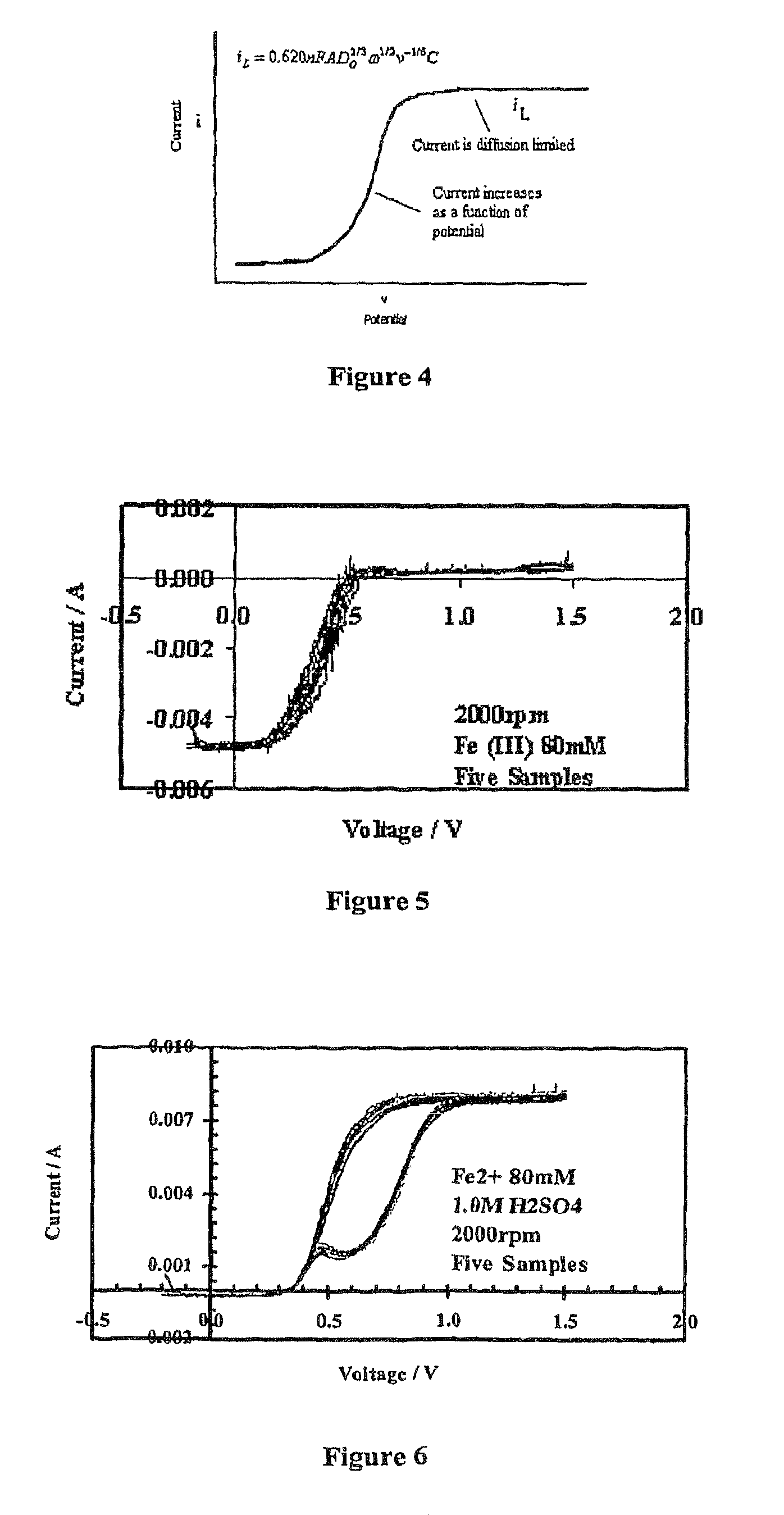Electrochemical technique to measure concentration of multivalent cations simultaneously
a multivalent cation and electrochemical technology, applied in the direction of liquid/fluent solid measurement, material electrochemical variables, instruments, etc., can solve the problems of inability to distinguish metal valence differences, process becomes very complex and expensive, and instruments are expensiv
- Summary
- Abstract
- Description
- Claims
- Application Information
AI Technical Summary
Problems solved by technology
Method used
Image
Examples
Embodiment Construction
[0026]Provided herein is a new technique to measure the concentration of multivalent cations in solution simultaneously. Examples of multivalent cations include the following pairs: Fe(II) / Fe(III), As(III) / As(V), Se(IV) / Se(VI), Cr(VI) / Cr(III), and Sb(III) / Sb(V). The technique has been called EM2C2 (Electrochemical Measurement of Multivalent Cations Concentration). The method consists of using a steady state polarization technique, where the developed limiting currents are measured and they are related to the concentration of the cations (analyte) present in solution. A model has been developed that correlates the limiting currents with the concentration of the pair cations, so that we can easily calculate the concentration in the solution of both of the multivalent cations simultaneously.
[0027]Further provided is a system for using the technique described herein. The system comprises a working electrode comprising a rotating disk electrode (RDE); a potentiostat; a counter electrode;...
PUM
| Property | Measurement | Unit |
|---|---|---|
| area | aaaaa | aaaaa |
| concentration | aaaaa | aaaaa |
| upper limiting current | aaaaa | aaaaa |
Abstract
Description
Claims
Application Information
 Login to View More
Login to View More - R&D
- Intellectual Property
- Life Sciences
- Materials
- Tech Scout
- Unparalleled Data Quality
- Higher Quality Content
- 60% Fewer Hallucinations
Browse by: Latest US Patents, China's latest patents, Technical Efficacy Thesaurus, Application Domain, Technology Topic, Popular Technical Reports.
© 2025 PatSnap. All rights reserved.Legal|Privacy policy|Modern Slavery Act Transparency Statement|Sitemap|About US| Contact US: help@patsnap.com



